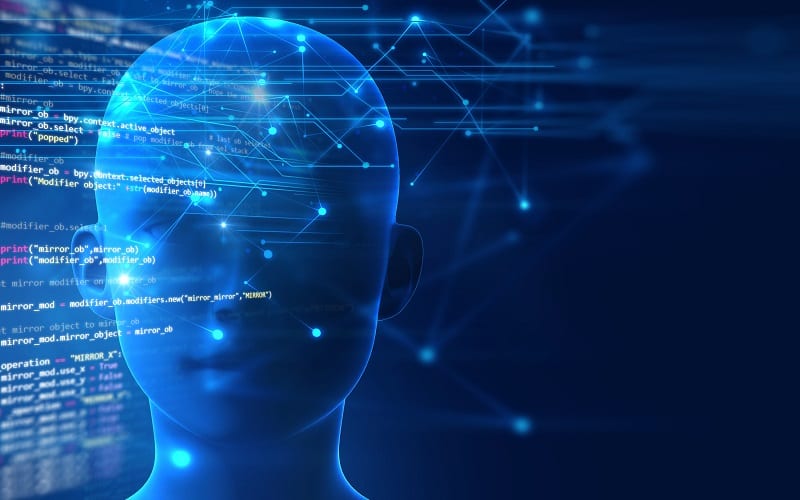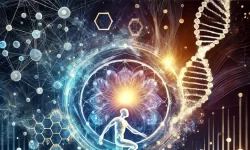A new approach to defining and designing systems is coming.
Introduction
The human ecosystem is made of open and closed systems. While the earth is a closed system for matter but an open system for energy, the human body is considered an open system. There is a growing belief that the current understanding of science cannot wholly explain human life, mind, and consciousness, nor can it explain the nature and origin of life, matter, the environment, the universe, and reality. Perhaps there is a need for a new ontological model of reality to look into the mysteries of the universe beyond the human ecosystem in cyberspace, aquaspace, geospace, and space (CAGS).
The universe is understood to be made of mathematics. Mathematics is primarily about rules and patterns, and science is about discovering and documenting rules and patterns that occur in nature. So, as we begin to study the universe beyond CAGS, we must focus on discovering and documenting rules and patterns and their relationships in open and closed systems that occur in nature, matter, and the universe. That brings us to an important question: how will understanding mathematical laws that govern us beyond the human ecosystem help us understand open systems better? To begin with, it will help us by giving us a reference model for understanding the interconnectedness and interdependencies of the human ecosystem.
Category theory provides a structural framework for mathematics and is on its way to becoming a language for consciousness for the entire universe. As the Stanford Encyclopedia of Philosophy states: “Roughly, [category theory] is a general mathematical theory of structures and of systems of structures… At a minimum, it is a powerful language, or conceptual framework, allowing us to see the universal components of a family of structures of a given kind, and how the structures of different kinds are interrelated. Category theory is both an interesting object of philosophical study, and a potentially powerful formal tool for philosophical investigations of concepts such as space, system, and even truth.”
Category theory is already becoming a key driver for current mathematics and academic computer science and is beginning to be applied to mathematical physics. Now, it is believed that Quantum physics, the study of the universe on an atomic scale, gives us a reference model to understand the human ecosystem in the discrete individual unit. As category theory becomes the language of mathematics for the articulation of the laws of physics, there is a hope that it will help us in defining and designing the open systems in the human ecosystem that can assist us on our journey towards understanding the origin of our universe and our place within it.
Acknowledging this growing need, Risk Group initiated a much-needed discussion on the Promise of Category Theory with Prof. (Dr.) John Carlos Baez on Risk Roundup.
Prof. (Dr.) John Carlos Baez, an American mathematical physicist and a professor of mathematics at the University of California, Riverside participates in Risk Roundup to discuss Category Theory.
Understanding Category Theory
Based on the Mathematical Universe Hypothesis, the emerging reality is that we live in a relational reality. What does that mean? It means that the properties of the biosphere around us stem not from the properties of its ultimate building blocks, but from the relations among these building blocks. While the position of category theory as a foundational language in applied mathematics and mathematical modeling is still in its infancy and a rather unexplored path, it is crucial to understand how it can help us understand the complex problems facing humanity.
The systems and structures we look at in the universe are self-organized at several different levels. Moreover, we live in a relational reality where self-organization is an obvious principle that is embedded in our description of the universe. This means that the properties of the world around us stem not from properties of its ultimate building blocks or individual units, but from the relations among these building blocks and units. That brings us to an important question: Is category theory a tool to understand the relationships? Moreover, how does category theory explain the relational reality of the contested commons of cyberspace, aquaspace, geospace, and space (CAGS)?
Category theory has already shown promise by providing an abstract framework for modeling processes to apply to science, engineering, and the contested commons of the human ecosystem. It is vital to explore how can we further apply category theory to the problems we are trying to solve today (security issues to surveillance issues, environmental issues to economics issues, automation issues to social issues, and more).? How will category theory help us understand the complex issues facing the future of humanity?
Category Theory Applications
From assisting us in understanding how patterns of innovation rise to how patterns of destruction develop, category theory has the potential to be a powerful language or conceptual framework on which we can formulate our collective future. By keeping category theory as a reference model, we are more able to see the common components of a family of structures of any given kind that will finally help us understand how constructive and destructive structures and behavior are interrelated and integrated. Now, processes are universal, but we don’t look at our human ecosystem in the form of processes. Should we? Since in nature, a causal law takes the form that, similarly to actions by an individual, specific processes tie causes and effects together, we most certainly should.
Prof. (Dr.) John Carlos Baez expands on this notion in Risk Roundup: “In any system, we are dealing with on Earth, it is always very fundamentally an open system — its constantly being affected in unpredictable ways by the outside world and it is also affecting the outside world in unpredictable ways.”
If an individual being is seen as a single unit, what defines and determines our behavior and relationships? While the concept of reductionism (which essentially states that the whole is composed of simpler parts yielding discreteness and that the study of the whole can be reduced to the study of its parts) has become an integral part of the human ecosystem, can we continue to rely on the reductionist approach? It is time we understand the cause and effect of individual human behavior, and its impact on the collective human species since the nature of reality in the human ecosystem is inherently and inevitably dual. Since particle-like and wave-like behaviors are inextricably connected, they must be inherent in any design and development of open systems.
Since category theory is expected to be a language for consciousness for the entire universe and will give us evidence to the more profound puzzle as to how to formulate the processes and patterns in the human-made ecosystem, will it help us dig deeper into why the order of the universe is dependent on interconnected and interrelated processes? Moreover, how are the systems and states undergoing open and closed processes that alter them in nature?
Justifiably category theory is rapidly becoming important today in understanding the current and future problems facing humanity. It is time for decision-makers across nations to begin to understand the promise of category theory and apply it to define and design systems at all levels keeping in mind the interconnected relationships between discrete individual units to build our collective future.
What Next?
Like particles in quantum mechanics, an individual unit, be it biological or non-biological, has an essential presence in spaces found in the universe (both natural and human-made). So, as we try to define and design open systems for the coming tomorrow, it is critical to understand and evaluate the essential laws of category theory to strengthen the human ecosystem in which we exist. It seems the future will need to be built using category theory.
NEVER MISS ANY OF DR. PANDYA’S POSTS
Join here for a regular update on Risk Group Insights.





 Is 5G The Future?
Is 5G The Future?